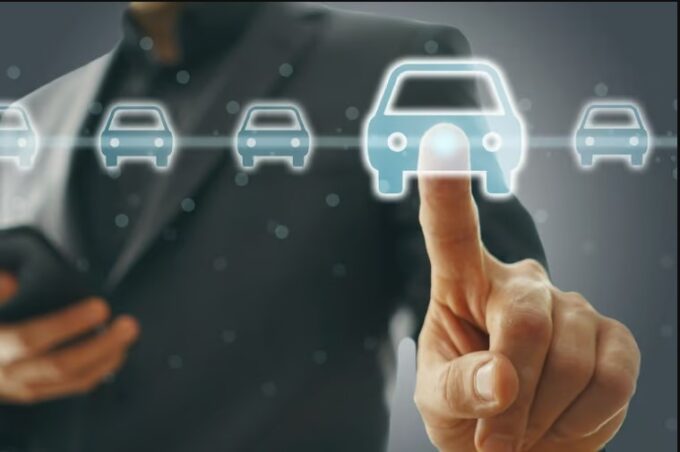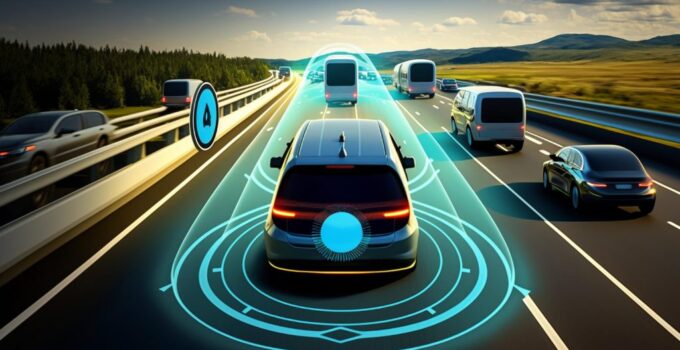In the ever-evolving landscape of technology, the future of car insurance is being shaped by groundbreaking innovations. Emerging technologies such as quantum computing, 5G connectivity, and edge computing are poised to usher in a new era for the insurance sector. This article explores the transformative potential of these technologies and their ability to introduce novel services, enhance data processing capabilities, and significantly boost efficiency in the realm of car insurance.
Quantum Computing: Redefining Risk Assessment and Premium Calculation

Source: insurancebusinessmag.com
Quantum computing, with its unparalleled processing power, holds the key to revolutionizing how car insurance is underwritten and priced. Traditional risk assessment models rely on complex algorithms that struggle to handle the vast datasets inherent in the insurance industry. Quantum computing, by leveraging the principles of quantum mechanics, can process and analyze massive datasets at speeds unimaginable with classical computers.
This quantum leap in computing capabilities enables insurers to conduct more accurate risk assessments by considering a myriad of factors simultaneously. From analyzing real-time traffic patterns to assessing a driver’s behavior with unprecedented granularity, quantum computing opens the door to a level of precision that was once deemed impossible. The result? Customized insurance premiums that reflect an individual’s actual risk profile, fostering a more equitable and responsive insurance model.
5G Connectivity: Enabling Real-Time Data and Telematics
The advent of 5G connectivity is set to redefine the way insurers collect and utilize data. With its high-speed, low-latency capabilities, 5G connectivity facilitates the seamless exchange of information between vehicles, infrastructure, and insurers. This is a game-changer for telematics, the technology that monitors and transmits real-time data on driving behavior.
Insurers can leverage 5G connectivity to enhance telematics programs, receiving instantaneous updates on factors like speed, location, and driver habits. This not only allows for more accurate risk assessments but also enables dynamic adjustments to insurance premiums based on real-time driving conditions. The era of static, annual policies may give way to flexible, on-the-fly adjustments that align with individual driving patterns, creating a more responsive and customer-centric insurance experience.
Edge Computing: Reducing Latency and Enhancing Claims Processing
In the intricate world of car insurance, the efficiency of claims processing plays a pivotal role in customer satisfaction and operational effectiveness. Traditional claims processing often involves a time-consuming sequence of data collection, analysis, and validation, leading to delays in settlements and increased administrative overhead. Edge computing, however, emerges as a powerful antidote to these challenges.
1. Real-time Data Processing:

Source: itl.cat
At the core of Edge Computing’s impact on claims processing is its ability to handle data in real-time. In connected vehicles, sensors and cameras continuously generate streams of data related to the vehicle’s status, surroundings, and any potential incidents. With edge computing capabilities embedded directly within the vehicle, this data can be processed locally and instantaneously.
In the event of an accident, for instance, the on-board edge computing system can swiftly analyze the data from various sensors, providing a detailed and accurate account of the circumstances leading to the incident. This real-time analysis not only expedites the claims processing timeline but also offers a level of granularity that was previously unattainable, reducing ambiguity and enhancing the accuracy of assessments.
2. Immediate Response to Risks:
Edge computing’s low-latency processing empowers insurers to respond promptly to potential risks. By analyzing data at the edge, insurers can receive instantaneous alerts regarding unusual driving behavior, road hazards, or even emerging patterns in driver conduct. This proactive approach enables insurers to intervene promptly, whether through sending real-time warnings to drivers or triggering immediate assistance, thus preventing potential accidents and reducing the severity of claims.
3. Minimizing Fraud and Enhancing Security:
The decentralized nature of edge computing brings an added layer of security to claims processing. As data is processed locally within the vehicle, the risk of tampering or fraudulent activities is significantly reduced. This not only ensures the integrity of the claims data but also helps in preventing insurance fraud—a persistent challenge in the industry.
Edge computing, therefore, acts as a safeguard against fraudulent claims by providing insurers with access to trustworthy, unaltered data. This not only expedites the claims settlement process but also contributes to the overall reduction of fraudulent activities, leading to cost savings for insurers and more accurate risk assessments.
4. Efficient Resource Allocation:

Source: commercial.allianz.com
By conducting initial data processing at the edge, insurers can optimize the allocation of resources. Rather than relying solely on centralized data centers for every piece of information, edge computing enables a more distributed approach. This not only reduces the strain on centralized systems but also allows insurers to allocate resources more efficiently, ensuring that critical data is processed swiftly at the source.
5. Enhancing the Customer Experience:
From the perspective of the policyholder, the immediate and efficient processing of claims represents a significant improvement in the overall customer experience. Reduced waiting times for claim settlements, proactive safety alerts, and a streamlined claims process contribute to heightened customer satisfaction. This positive experience, in turn, can foster greater loyalty and trust between insurers and their policyholders.
Synergies between Quantum Computing, 5G Connectivity, and Edge Computing

Source: medium.com
The true potential of these emerging technologies lies in their synergy. Quantum computing’s ability to process vast amounts of data is complemented by 5G’s rapid data transfer capabilities and edge computing’s low-latency processing. Together, they form a trifecta that can reshape the entire insurance value chain.
For instance, quantum computing can analyze historical accident data and driver behavior, while 5G facilitates the real-time transmission of this information to insurers. Edge computing, deployed within vehicles, ensures that critical data is processed swiftly, enabling immediate responses to potential risks and streamlining claims processing.
Challenges and Considerations:
As with any transformative shift, the integration of these technologies into the car insurance landscape is not without challenges. Concerns regarding data privacy, cybersecurity, and the need for standardized regulations must be addressed to ensure the responsible and ethical use of these technologies.
The future of car insurance is undeniably intertwined with the rapid advancements in quantum computing, 5G connectivity, and edge computing. As these technologies mature and become more ubiquitous, insurers must embrace the opportunities they present to stay competitive and relevant in an evolving market. The era of personalized, real-time insurance experiences is on the horizon, promising a more efficient, responsive, and equitable future for drivers and insurers alike. The synergy of quantum computing, 5G connectivity, and edge computing is set to redefine not just car insurance but the entire insurance landscape as we know it.







